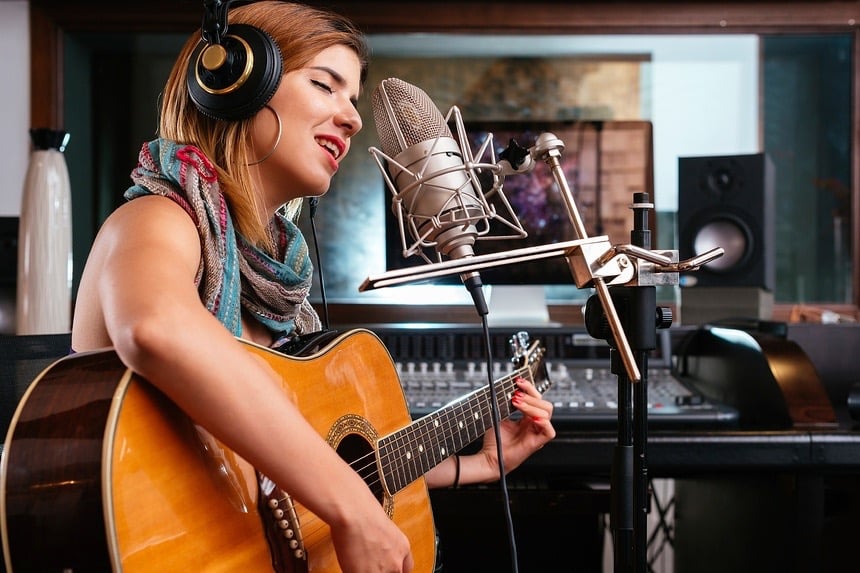How to Increase Your Vocal Range
Every singer dreams of having the most expansive vocal range possible. Sure, you may be in your car with the music blasting as you belt out those high notes, but in your mind you're on stage in front of tens of thousands of adoring fans.
Likewise, though it may not be as popular, there are tons of vocalists looking to hit lower notes with full clarity and warmth, as well.
The question is, can we increase our vocal range? And if it is possible, how do we accomplish this?
Today, we will be guided by Atlanta Institute of Music and Media vocal instructor, Rick Mallory, on tips and suggestions that help singers increase their vocal range and comfortably hit the notes they desire.
A Little About Rick
Rick Mallory is a vocal instructor at AIMM, and has been involved in many performances and studio sessions. He is also a member of the Atlanta Opera Chorus.
Let's get to the tips!
Table of Contents:
3 Areas to Focus On
When it comes to increasing your vocal range, there are a variety of factors that can determine whether or not you accomplish your goal.
Unfortunately, there is not just one technique or activity that you can do that will get your vocals where you want them to be. It is a collective effort of the following three components:
- Regular Practice
- Preparation
- Technique
As Rick mentions in the video above, preparation is not only speaking to vocal warm-ups. It is critical to get your entire body warmed up and ready to perform.
Outside of the excellent health benefits, going to the gym on days that you have vocal performances can work wonders. If you don't have access to a gym (or a membership), you can still use calisthenic workouts, meaning exercises that simply use your own body weight.
This type of exercise can include squats, pushups, jumping jacks, burpees, and crunches.
Your vocal technique and performance style also dictates a significant role in terms of your preparation.
If you typically sing in your chest voice, which we will touch on later, while sitting down, your preparation will likely be a little less intense than if you are expected to move around and dance while singing.
Projection
Now that you've taken the necessary steps to warm-up, physically and vocally, let's talk a little bit about projection.
Why is projecting something to focus on when discussing your vocal range or even singing for that matter? As Rick discusses in the video, we do not typically project in our day to day conversations.
Working diligently on projection and doing it in a safe way can benefit your singing entirely.
You may have noticed that "safe way," up above, is in italics. If you did, you might be thinking, is there an incorrect way to project? Yes, there actually is.
Think about this; have you ever gone to a concert or a sporting event where you get excited and start shouting?
Does your voice ever sound raspy and hoarse after the event? That is the type of projecting you do not want to implement while performing. A hoarse voice after projecting means that you are not properly using your diaphragm and body to support your voice.
You need to learn how to essentially yell and scream without injuring yourself.
Practicing and training the correct way to project will help your vocal range increase and protect the longevity of your singing voice, in general.
Understanding Vocal Registers
There are four main vocal registers that singers utilize. These include:
Chest Voice: This refers to the lower and thicker tones. It also reflects the register that we normally use while speaking.This is called chest voice because when you sing using your typical speaking register, or close to it, and you put your hand on your chest, you'll feel a vibration.
Head Voice: Your head voice is when you sing using the top of your register, which is created by thin vocal folds.
Falsetto: Falsetto is a form of singing that is higher in your register, like your head voice, but much breathier and hollow.
Mixed Voice: When a singer can successfully blend their chest voice and their head voice, they are using what is called the mixed voice.
It is critical to get to the point where you are comfortable with how you sound singing in each register.
Make sure to check out the video of Rick above as he displays switching between different vocal registers as he sings "Fly Me to the Moon," "Don't Know Why," and a couple of Prince songs.
To learn more about vocal registers, check out our blog detailing a singer's head voice vs. chest voice.
The Lip Trill
A lip trill is a great vocal exercise to increase your vocal range because it helps you automatically smooth out transition points in your register.
How to Perform a Lip Trill
Also known as "lip bubbles," the actual sound you make doing a lip trill is similar to imitating an airplane or a toy car. While making this sound, you will go up and back down your scales.
Like Rick demonstrates in the video above, the lip trill exercise will accomplish the following:
- It points out where your transitional points are.
- It trains the vocal cords to smoothly transition between these registers.
The ultimate goal is that you will develop muscle memory so your register transitions become as smooth and seamless while performing as they are when you're doing the lip trill exercise.
Overall, it's a useful vocal exercise that is gentle, yet improves tone, breathing, and will truly help expand your vocal range.
Start Increasing Your Vocal Range Today
If you want to put yourself in the best position to expand your vocal range and learn from Rick himself, you need to check out the Atlanta Institute of Music and Media.
AIMM offers the following programs for vocalists:
- Music and Technology Associate Degree: Voice Concentration
- Performance Certificate: Voice Concentration
If you are interested in learning the ins and outs of music production, such as tracking, mixing, and mastering, we highly recommend you check out AIMM's Music and Technology Degree.
On the other hand, if you are dedicated to maximizing your vocal skill and are only interested in performing, the Performance Certificate is right up your alley.
Important Note: With how stressful everything is right now, AIMM is proud to offer our degrees and certificates as hybrid programs - meaning you have the choice to take classes either on-campus or online.
If this sounds appealing to you and you want to elevate your vocal abilities and range, click below to take the first step toward a successful singing career.
Additional Articles:













